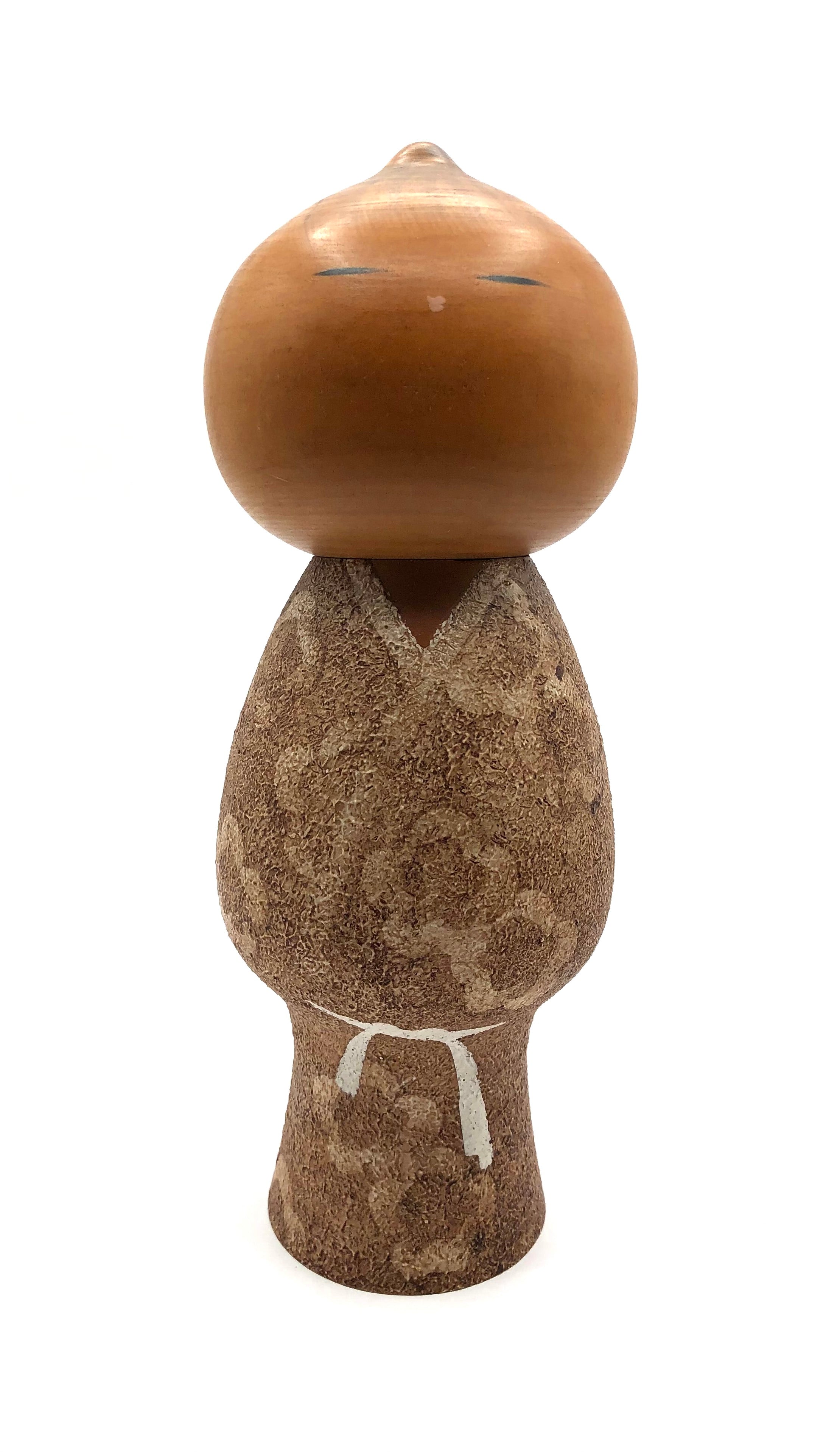
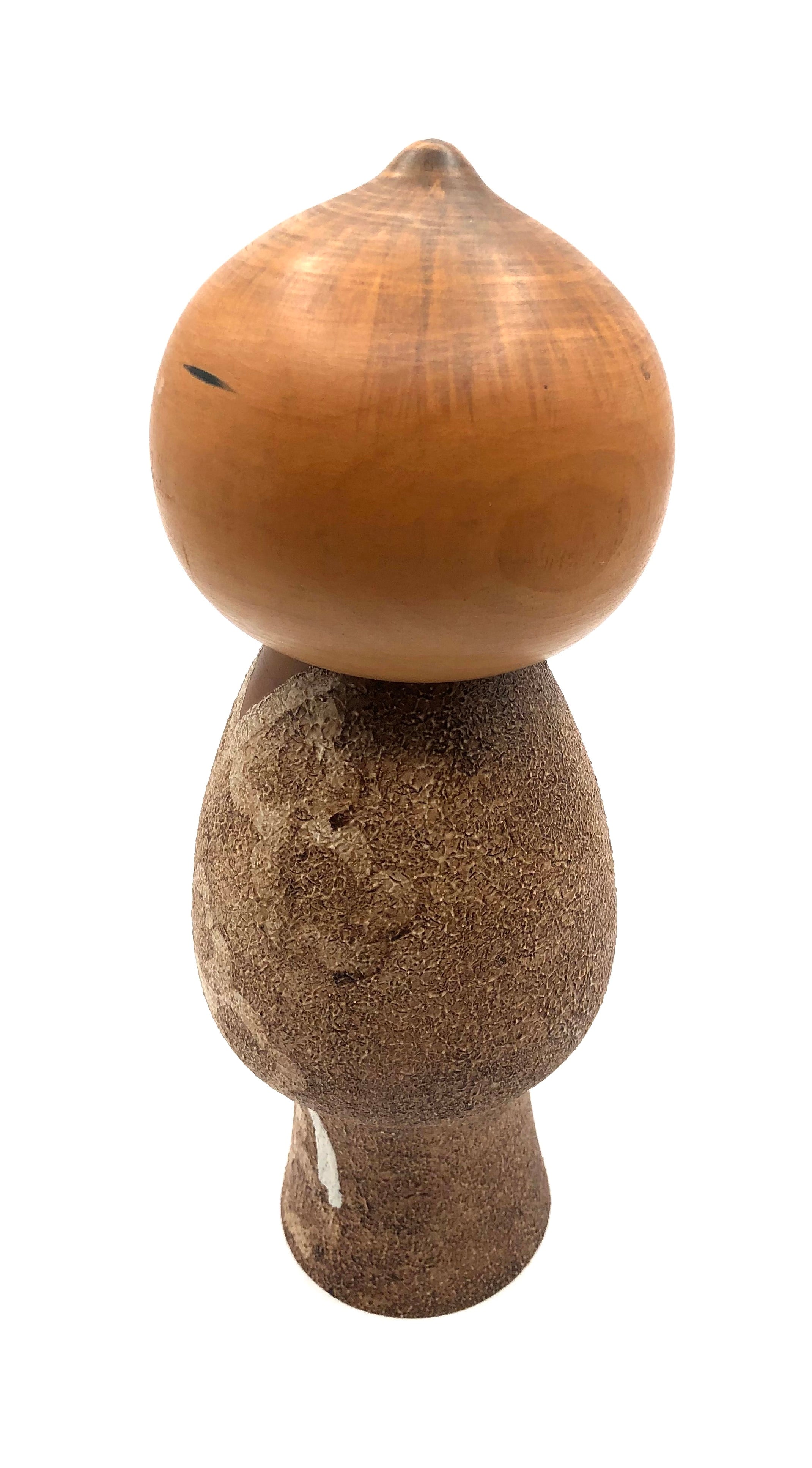
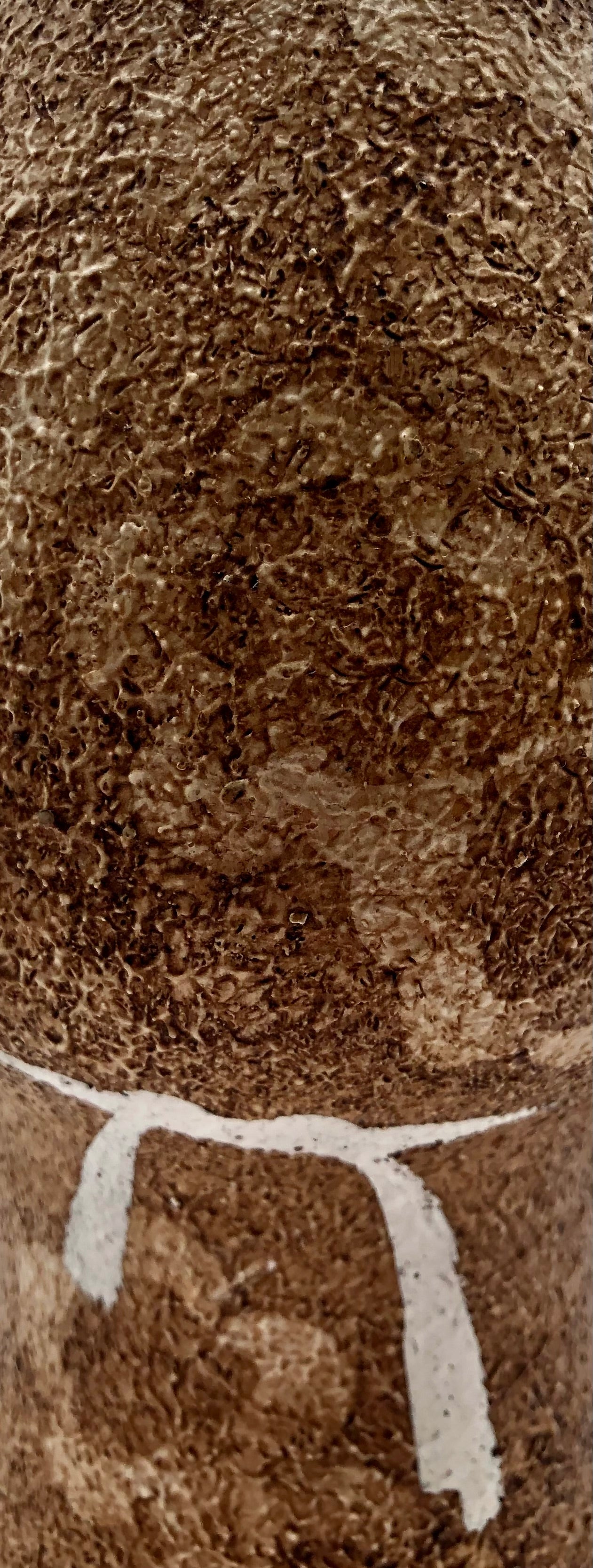
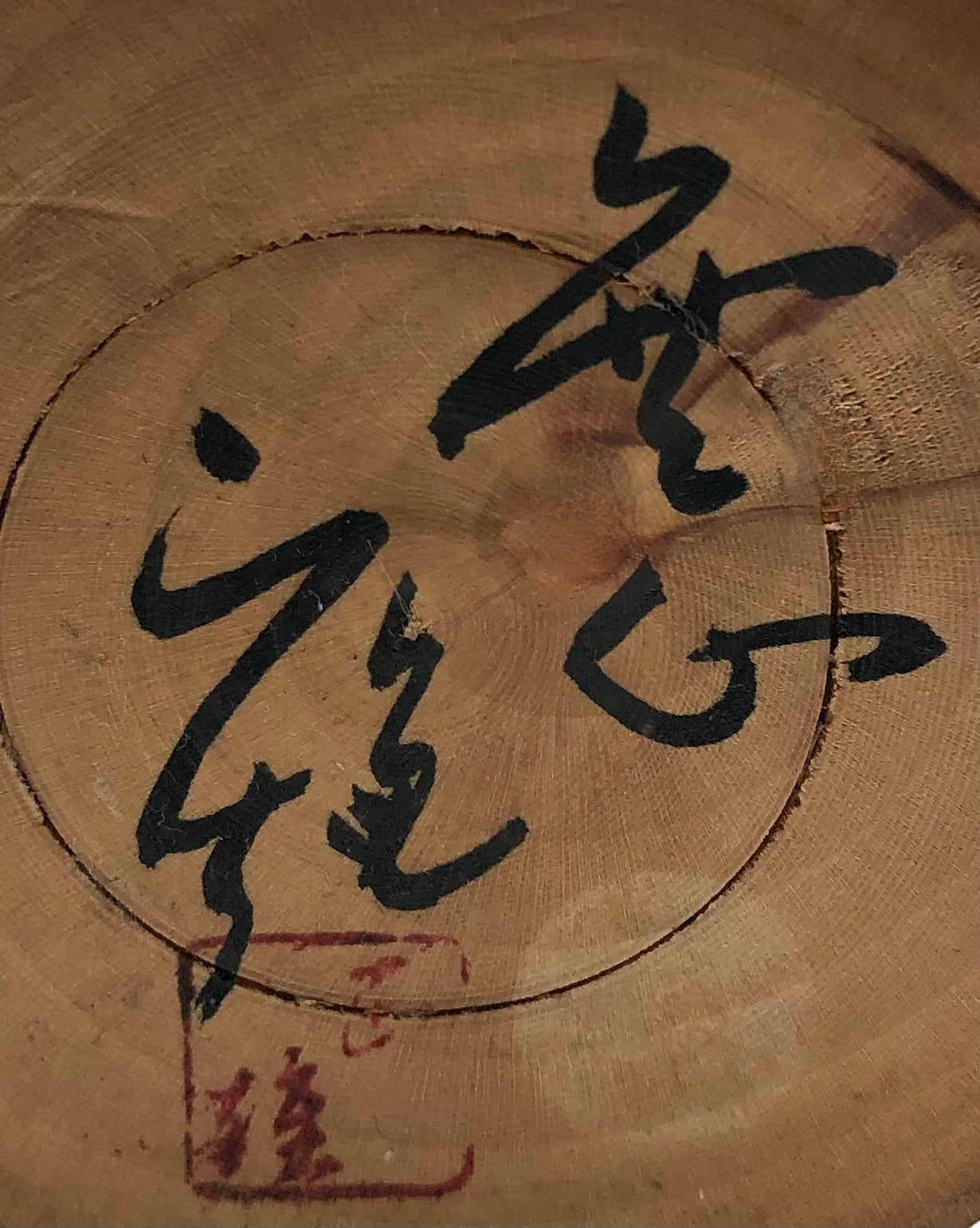
Vintage Sosaku Kokeshi entitled: “Mushin | Innocence” by Watanabe, Masao
Dimensions: 12-0”h
This rendition is one of the earlier models of a mother and child which follows the theme of ‘Innocence’ for which the artist is famous. This doll incorporates Watanabe’s uses of the ‘Hyoutan’, (gourd), a shaped head with a slight indication of hair, elongated eyes, and a tiny white dot indicating the nose. The major difference of this Kokeshi is the use of a Shibori Yukata, (unlined cotton summer kimono,) which is a hand died textile, which resembles a type of tie-dyeing and is colored with pigments of mauve and creamy- yellow, with undertones of stylized cherry blossoms. This is accomplished with the use of a gessoed texture, giving dimension and life to the piece. Finally, it has a white sash or belt which is typically worn with a summer bathrobe worn at home and to go back and forth the Onsen. The doll has Watanabe’s old script signature on the bottom which also identifies the piece.
The piece was published in the 2022 publication of Sosaku Kokeshi: Celebrating the Major Artists of the Creative Movement. For more information on this artist go to the following link:https://mingeiarts.com/collections/artisan-woodworker-watanabe-masao-1917-2007.
Condition: A mint condition exhibiting an aged patination and meticulous care. There are no missing elements, no scratches or imperfections related to daily use with all detailed elements intact. The object retains the original craftsmanship, meeting the standards of the collector of Japanese Sosaku Kokeshi
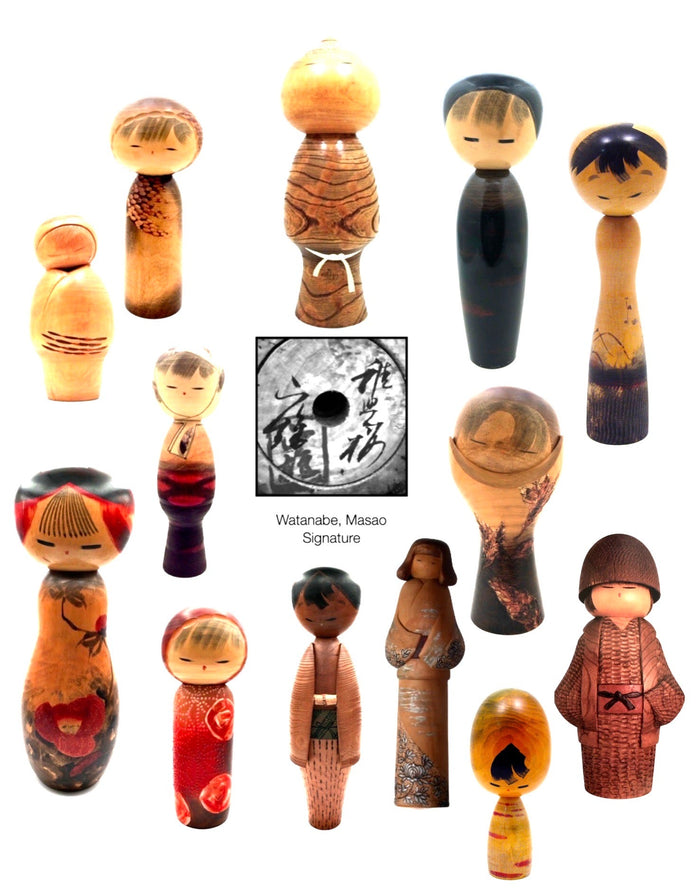
Artisan
Woodworker: Watanabe, Masao
1917-2007
Biographical History:
Watanabe-san is considered to be one of the greatest Sosaku Kokeshi artists in all of Japan. Born in Fukushima, Watanabe-san studied under Traditional Yajirou Master Sato, Tatsuo of Miyagi Prefecture. Arguably, the most popular and prolific of the 20th/c Sosaku Kokeshi artists, he began his craft in the early 1950s. His most famous Kokeshi themes are that of ‘innocence’ (Mushin), and his doll entitled: Chigo Zakura (Cherry Blossom Child) won the Minister’s Award and was presented to the Beatles in 1965, after their appearance in Japan with Sir Joseph Lockwood, Chairman of EMI Record Distributors, England. A multiple award winner from 1963-1981 in Kokeshi competitions around the world (Prime Minister's prizes for the works of "Chigozskura" in 1963 and "Shojo" in 1981), along with numerous prizes by the Modern Kokeshi Artist Association and JETRO. He held two exhibitions in Japan and was exempt from the examination of the All Japan Kokeshi Contest, a Member of the Nippon Kokeshi Artistic Handicraft Association. His works are permanently exhibited at the Nuremberg Toy Museum in Germany.

Collector's note – descriptive qualities, standard characteristics & ornamentation styles:
Of all the Kokeshi the emphasis is on the color of the natural wood and texture, and his diversity of form is the most recognizable characteristic of his dolls. The representation of clothing is seen in the use of the diverse rendering of Kimono, Yukata, and Haori complemented by the painted details that are common throughout his works. Several dolls not only show wonderful color rendition as well as textured/ raised applications resembling Shibori, a type of tie-dyeing that gives texture to the garment. He also prominently features the rose and camellia as a central motif along with extremely expressive eyes throughout the range of ages represented in his works.
Signature Research:
We heard from our colleague at Soulportals KokeshiVillage, a website researching vintage and contemporary Kokeshi artists and signatures. It was brought to our attention that Watanabe subcontracted an artist named Sato Norio to reproduce large numbers of his Kokeshi in the 1960s because of an enormous number of orders for his award-winning design Chigazokaura. Watanabe's signature for pieces designed and crafted by him is shown on this page celebrating a number of his award-winning dolls. Nario's versions were entitled Plum Grove and approved/attributed to Masao but not crafted by him.
Explore & Learn More about Woodworker: Watanabe, Masao